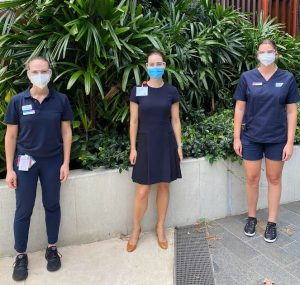The Royal Adelaide Hospital’s emergency department has been bolstered by technical capabilities to help minimise the risk to frontine staff when treating suspected COVID-19 trauma patients.
The CDI technology allows live view, patient vital signs, instant x-ray and ultrasound to be streamed on the screens for clinicians working between adjoining resuscitation bays.
This allows a support team to watch on from a “clean” space, and minimises the number of clinicians directly interacting with a possible COVID-19 trauma case.
There have been more than a dozen major traumas that were treated as probable COVID-19 cases.
The technology allows the team to manage the patient, while having other specialist doctors and nurses readily available watching on and able swing in if needed.
As well as secure live streaming, the technology allows for instant ultrasound images and x-rays on the screens.
There capability to feed the view from a fibre optic camera – used when intubating a patient – to the screen which can provide vital information for treating clinicians.
The system will continue to be fine-tuned and used more widely.
All of the information is stored on the VNA (Vendor Neutral Archive), which is a secure system for medical records, and is integrated on a patient’s medical record.
This is a huge benefit for patients because this potentially vital information is available to help inform their future, regardless of where they are.
For our frontline staff it also provides an excellent teaching and training tool so we can keep learning and looking for opportunities to improve care for our patients.
The information and footage is also streamed to the emergency department leadership hub, which has oversight of the whole department.
The live streaming capabilities are also being implemented between the ED and ICU, so awaiting clinicians can see what’s happening before a patient is transferred, without being in the room.
In the simulation scenario, a young patient is brought to ED by paramedics after being hit by a car. The 25-year-old had arrived from Victoria two days earlier, so was treated as a probable COVID-19 case.



